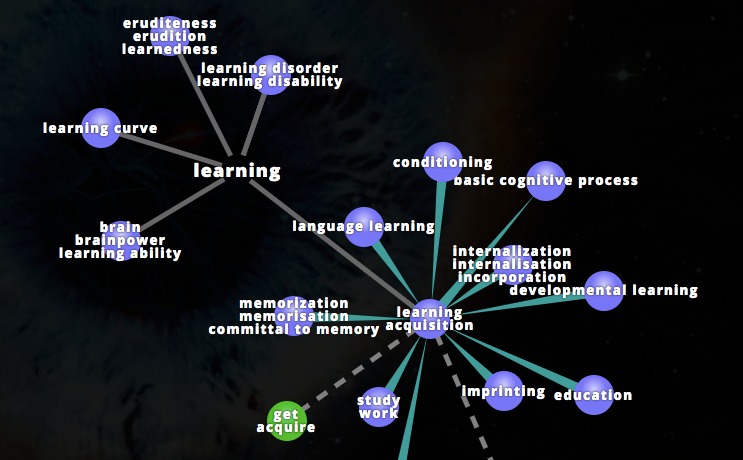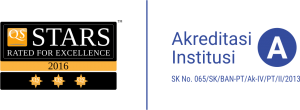Revisiting the Notion of Active Learning

By Astri Hapsari, S.S., M.TESOL
During COVID 19 pandemic, learning is moved from face to face interactions in the classrooms to distance online learning in various online learning platforms. Whether it is in classroom interactions to blended learning or full online learning, active learning still becomes the ideal approach of teaching or giving instructions.
Active learning is often defined as any approach to giving instruction or teaching in which all students actively engaged in the learning process. Active learning may take many forms. In active learning, students are expected to fully participate in their learning process, in contrast to more traditional instruction in which students passively accept knowledge from the lecturers.
If we google active learning, we usually find activities that involve students to practice their thinking skills, such as: explain concepts in their own words through discussions, argue with complex questions, solve problems, and reflect from their experiences. As learners, we are familiar with the manifestation of the notion of active learning in our learning process, but do we really understand the cognitive process needed for an active learning turns to be the real memorable learning experience and in-depth knowledge in our mind?
Memory and Learning
In order to understand the cognitive process in active learning, we should understand the way memories are stored . Atkinson and Shiffrin (1968) proposed a multi store model of memory. When a new information or knowledge is received in our sensory memory from the environment, it comes as short term memory which lasts only 5 to 30 seconds. Short term memory is the gateway into long term memory, but it does not store memory and is very limited in capacity. For active learning to happen, there must be intention and activities that involve thinking to learn which can cause active processing of new information and knowledge between short term and long term memory. Linking new knowledge and information to prior knowledge can help working memory to store them to long term memory. Hands on exercises or activities need to include some form of meaningful cognitive processing in order to be stored in long term memory. Active learning happens if the students engage in meaningful activities in order to proceed new knowledge, concept, and skills to long term memory.
In addition to understanding how new information and knowledge proceed in short term and long term memory, students need to understand how attention works in order to perform an active learning. Selective attention happens when we consciously focus on something but it does not ensure long term memory formation. The reason why the students can pay attention and listen carefully but not much be learned is because what comes into short term memory is not processed with long term memory. For an active learning to happen, a learner should link and proceed through a dialogue between working memory and long term memory after attending new knowledge or information from sensory memory or short term memory. This effort is called elaborative encoding. Connecting new information and knowledge to prior knowledge can help learners stick in long term memory.
Implications for Teaching
By understanding the multi store model of memory, we can have deeper knowledge on how active learning should involve active cognitive processing. Some implications for teaching :
- Inside Out Teaching
When a teacher designs a lesson by thinking first what’s in the learner’s head and emotion.
By relating the lesson to what the students already know, it is easier for them to store the new knowledge and information to their long term memory.
- Activating prior knowledge
To make students familiar with the context of the new knowledge or information also helps them in retrieving concepts and skills from long term memory to prepare for a new lesson. It also helps the teacher to see the gaps in understanding before teaching. Free recall is often better than cued recall for durable learning because the efforts in free recall helps students in consolidating memories and providing learner-generated retrieval cues.
- Making memory is effortful and requires thinking
As John Dewey puts it eloquently it is not experiences we learn from but reflection upon our experiences. As teachers, we should put our best effort to help students retain new knowledge, conceptx, and skills to their long term memory by creating a meaningful and supportive learning environment that helps their cognitive processing.
After revisiting the notion of active learning through a cognitive science lens, it is worth reflecting on our own teaching practice, have we provided enough opportunity for our students to store and retrieve new knowledge, values, and skills in our design.
References
Atkinson, R.C. & Shiffrin, R.M. (1968). Chapter: Human memory : A proposed system and its control processes. In Spence, K.W., & Spence, J. T. The psychology of learning and motivation (Volume 2). New York: Academic Press, pp 89-195.
Chamary, J.V. (2015). How Inside Out Explains The Science of Memory. In Forbes.https://www.forbes.com/sites/jvchamary/2015/08/30/inside-out-science/#6f9d86a05184
Columbia University and Teachers College via EdX. (2019). The Science of Learning – What Every Teacher Should Know. https://www.classcentral.com/course/edx-the-science-of-learning-what-every-teacher-should-know-5725?utm_source=fcc_medium&utm_medium=web&utm_campaign=ivy_league_courses_2020
Mcleod, S. (2017). Multi Store Model of Memory. In Simply Psychology. https://www.simplypsychology.org/multi-store.html






Leave a Reply
Want to join the discussion?Feel free to contribute!